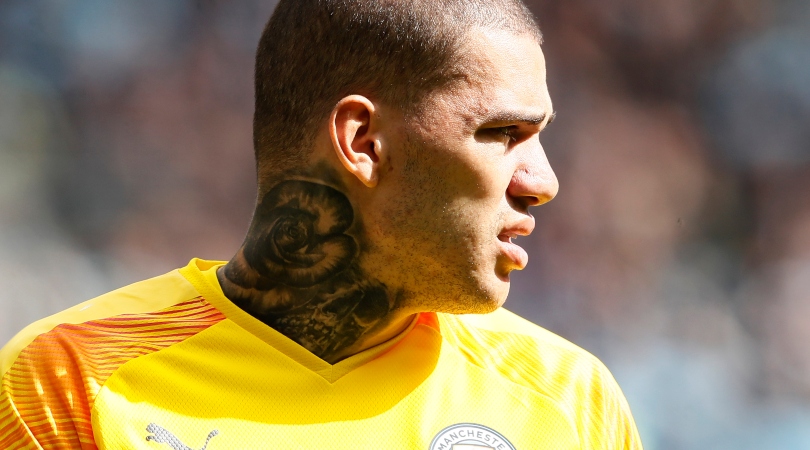Why footballers shouldn't get tattoos – and the science behind it
Tattoos are omnipresent in professional football, but they could be impeding performance – especially in the heat

James Witts is author of Training Secrets of the World’s Greatest Footballers, published by Bloomsbury and out now
Raheem Sterling flew to the 2018 World Cup off the back of a Premier League-winning season, and with 23 goals for Manchester City. But all that mattered for little when he was pictured at England’s pre-Russia training camp at St George’s Park with a gun tattoo on his leg. This itself was not even new: Sterling had already shared a photo on social media with the tattoo of an M16 assault rifle. It was still considered a big news story.
To Sterling, it simply reflected a pledge he made to never touch a gun after his father was shot dead when he was two years old. To some quarters of the press, the image was “totally unacceptable” and “sickening”.
To a physiologist, however, it might represent an impediment to the sweat glands working properly.
It’s not just Sterling, of course: Lionel Messi, Sergio Ramos, Dele Alli – you could name players all day. It’s estimated that over 50% of professional footballers now have tattoos, which makes it surprising that – until recently – the impact of tattoos on a sportsperson’s physiology had never been examined. Maurie Luetkeimer, professor of physiology and health science at Alma College in Michigan, corrected that anomaly by recruiting 10 fit and healthy young men who had a tattoo on at least one side of their bodies.
The researchers applied small chemical patches to both the tattooed and untattooed skin. These patches contained pilocarpine nitrate – a substance that stimulates sweating. The volunteers wore these patches for 20 minutes before Luetkeimer and her team removed them for analysis.
LIST 11 players with the worst tattoos in football
Get FourFourTwo Newsletter
The best features, fun and footballing quizzes, straight to your inbox every week.
The findings revealed that the patches above the tattooed skin were much lighter; as it transpired, they’d sweat half as much as the untattooed side. The composition of the sweat was also different, with perspiration from the tattooed skin containing nearly twice as much sodium as sweat from the untattooed side.
“That finding suggests the underlying cause of the shift in sweat probably involves permanent changes within the skin after tattooing,” Dr Luetkemeier said. “Perhaps some of the remaining dye blocks some of the sweat glands.
“But more probably, lingering inflammatory cells [from the initial tattoo itself – perhaps not surprising as the artist punctures the skin with dye-filled needles at a rate of up to 3,000 times per minute] change the chemical environment within that area of the skin, in ways that slow the response of the glands and affect how much sodium is incorporated from nearby cells into the sweat.”
Pragmatically, Dr Luetkemeier concluded it is “unlikely” that tattoos would impede perspiration enough to contribute to overheating or other problems, even when playing football. Less diplomatic was Dr Ingo Frobose of Cologne’s German Sports University. “I would forbid footballers from being tattooed,” Dr Frobose told The Sun in August 2017. “Various studies have shown that players suffer a three to five per cent drop in performance after having a tattoo. The skin is the largest organ we have, yet we poison it.”
Dr Frobose failed to elaborate on the study that exhibited such a performance drop, but did continue to highlight that 60-70% of the ink from tattoos doesn’t stay on the skin. Instead, it passes into the bloodstream. “As a result, one’s powers of recovery suffers and you are no longer as fresh as before,” he sniffed.
Further research is required to investigate the impact of tattoos on sweat rate, its composition and any potential detrimental effect on sporting performance. But one thing is clear: with footballers’ tattoos now so common, it’ll hopefully at least be a level perspiration playing field come the 2022 Qatar World Cup.
James Witts is author of Training Secrets of the World’s Greatest Footballers, published by Bloomsbury and out now
While you're here, why not take advantage of our brilliant subscribers' offer? Get 5 issues of the world's greatest football magazine for £5 – the game's greatest stories and finest journalism direct to your door for less than a pint in London. Cheers!
NOW READ…
TALENTSPOTTER Eric Garcia: who is the 18-year-old about to step in at centre-back for Manchester City?
QUIZ Can you name the 50 Real Madrid players with the most Champions League appearances?

